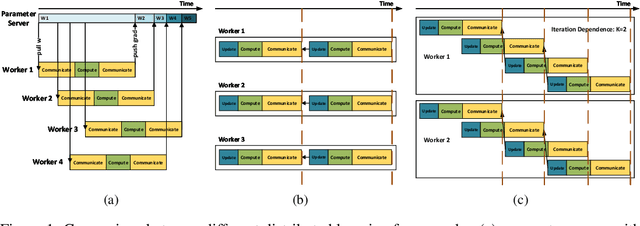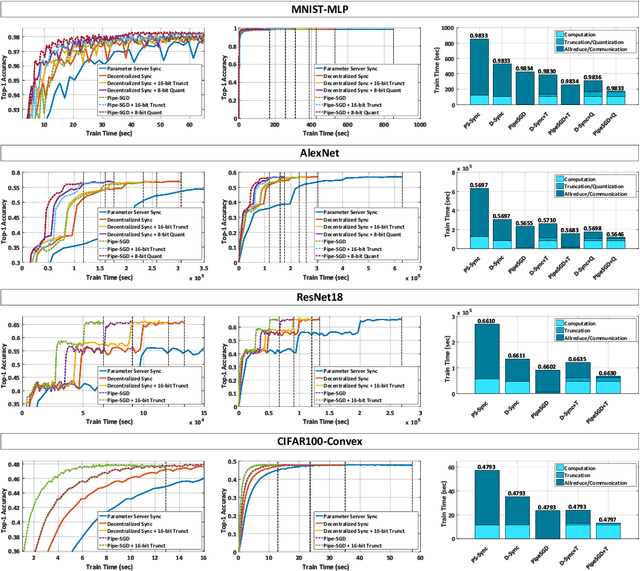Pipe-SGD: A Decentralized Pipelined SGD Framework for Distributed Deep Net Training
Paper and Code
Nov 08, 2018



Distributed training of deep nets is an important technique to address some of the present day computing challenges like memory consumption and computational demands. Classical distributed approaches, synchronous or asynchronous, are based on the parameter server architecture, i.e., worker nodes compute gradients which are communicated to the parameter server while updated parameters are returned. Recently, distributed training with AllReduce operations gained popularity as well. While many of those operations seem appealing, little is reported about wall-clock training time improvements. In this paper, we carefully analyze the AllReduce based setup, propose timing models which include network latency, bandwidth, cluster size and compute time, and demonstrate that a pipelined training with a width of two combines the best of both synchronous and asynchronous training. Specifically, for a setup consisting of a four-node GPU cluster we show wall-clock time training improvements of up to 5.4x compared to conventional approaches.
 Add to Chrome
Add to Chrome Add to Firefox
Add to Firefox Add to Edge
Add to Edge